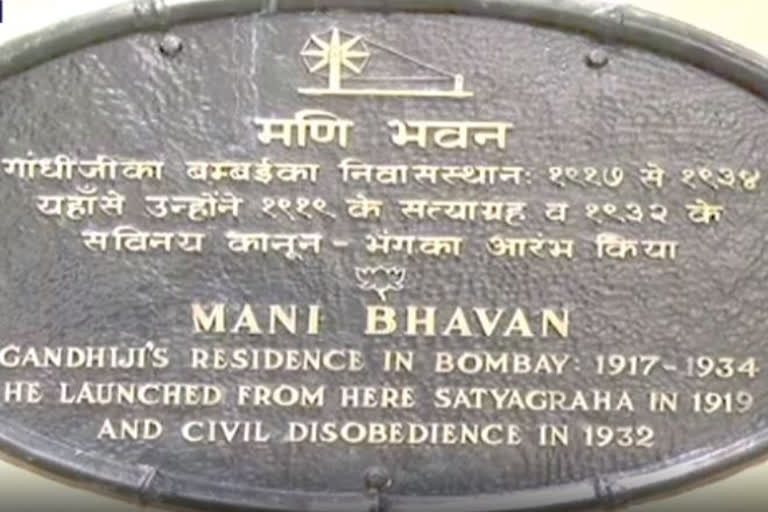Mumbai: There are only a few places in India that boast the prestige of sheltering the father of the nation, Mahatma Gandhi. One such place in Maharashtra is the Mani Bhavan, located at the Laburnum Road in the Gamdevi precinct of Mumbai. Mahatma Gandhi stayed here for over 17 years between the years 1917 and 1934. Mani Bhavan had become the focal point of all the political activities by Mahatma Gandhi as this period marked just the beginning of India's freedom struggle. The place has consequently witnessed several important historical events that occurred across the period Gandhi lived here.
The Mani Bhavan is now known as the Gandhi Memorial Museum and attracts several tourists every year. The entire building now encompasses Gandhi's photos with his family, friends, important leaders, and some remarkable events that he has been a part of. Apart from this, the place also has his clothes, Charkha, and other belongings exhibited as artifacts at the museum.
The room where Gandhiji stayed, has been kept as it was at the time of his stay. On the ground floor, there is also a library that encompasses over 50,000 books including the ones written about him and his philosophy and teachings. Some of the books here belonged to Gandhi himself and were read by him too. The Ph.D. students pursuing Gandhian Philosophy or other subjects related to him often refer to this library for their references and study material.
Meghshyam Azgaonkar - the Executive Secretary at the Mani Bhavan Gandhi Museum - remembers the days when Gandhi had fallen quite ill while he was staying at the Gandhi Bhavan. "The doctor had told Kasturba Gandhi that his situation is quite critical and suggested him to include goat's milk in his diet, which eventually helped him recover. Gandhi also used to run all his half-monthly magazines from here. The Navjeevan magazine and others were also published from here," he said. The Swadeshi movement that began in 1921 during British rule also stemmed from the Mani Bhavan.
It was also from Mani Bhavan that Gandhi was arrested by the British on the morning of January 4, 1932. His arrest was reportedly made from the terrace of the Mani Bhavan building during the freedom movement. In the same year on the 27th and 28th of June, a meeting of the Congress Executive Committee was also held here. The most important thing about the Mani Bhavan is perhaps the significance it holds in shaping the symbolism attached to Gandhi's figure. It is from here that Gandhi changed his attire and adopted the signature Dhoti costume after he started using the Charkha here for the first time.
Some of the other crucial events that the monument witnessed are the meetings regarding the non-cooperation movement, civil disobedience, Dandi Yatra, and the Satyagraha, apart from his usual meetings with other freedom fighters. "This building did not originally belong to Gandhi. A Revashankar Jagjivan Zaveri, who was an acquaintance to Mahatma Gandhi, owned it. Gandhi lived as his guest here, on the second floor of the building. People from across India and the world used to come here to ask Gandhi for his advice and suggestions or just to meet him," remembers Azgaonkar. He further informs that the museum's trust bought the building in the year 1955 and in 1965, the foundation of the Gandhi Memorial Museum was laid. Pandit Jawaharlal Nehru had inaugurated the museum in the same year.
Although the Gandhi Bhavan remains closed due to the lockdown these days, the tourists who visit the place get a reminiscing insight into Gandhi's life.



